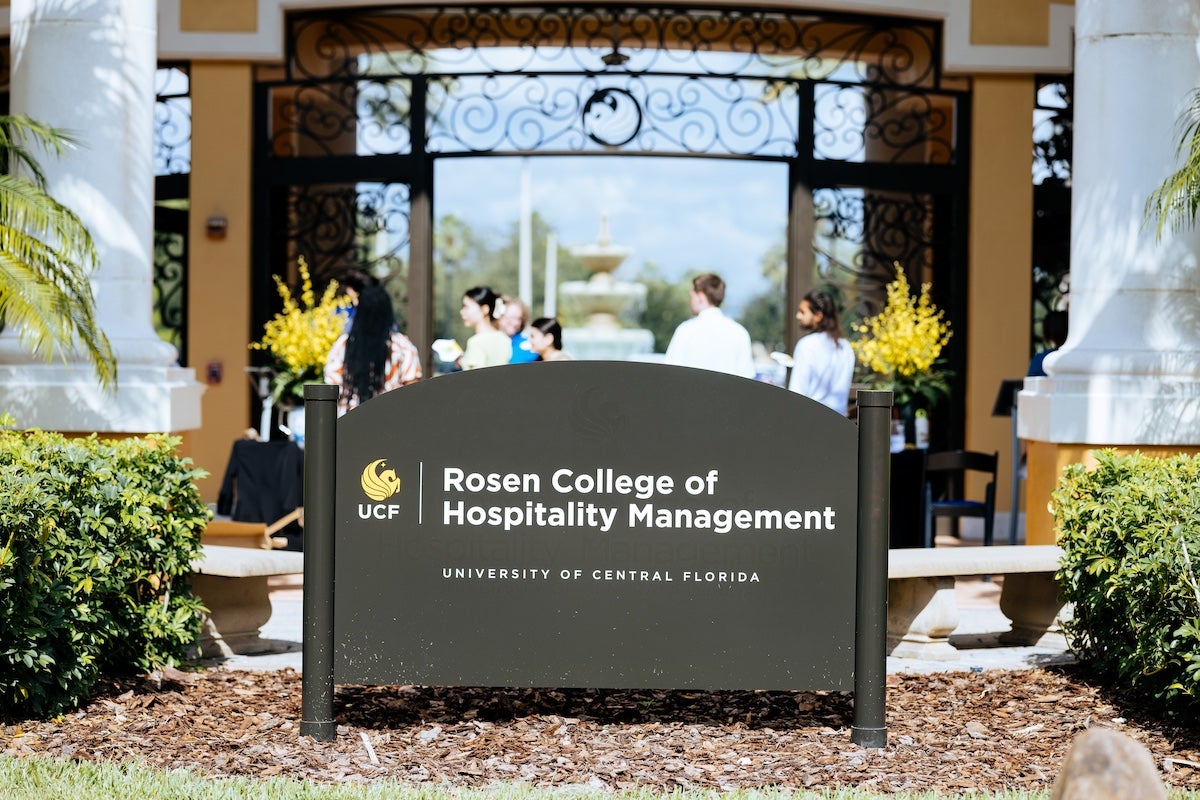2011 Faculty Publications
Avci, U., Madanoglu, M., & Okumus, F. (2011). Strategic orientation and performance of tourism firms: Evidence from a developing country. Tourism Management, 32(1), 147-157.
Bilgihan, A., Okumus, F., Nusair, K., & Kwun, D. (2011). Information technology and competitive advantage in hotel companies. Journal of Hospitality and Tourism Technology, 2(2), 139-154.
Chen, P. Okumus, F., Nusair, K., & Hua, N. (2011). Developing Effective Communication Strategies for the Spanish and Haitian-Creole-Speaking Workforce in Hotel Companies. Worldwide Hospitality and Tourism Theme, 2 (4), 335-353.
Croes, R. (2011). Measuring and explaining competitiveness in the context of small island destinations. Journal of Travel Research 50(4), 431-442.
Croes, R. (2011). The Small Island Paradox. Tourism Specialization as a Potential Solution , Lambert Academic Publishing: Saarbrucken, Germany.
DiPietro, R., Parsa, H.G. & Gregory, A. (2011). Restaurant QSC inspections and financial performance: An empirical investigation, International Journal of Contemporary Hospitality Management, 23(7), 982-999.
Fjelstul, J., Jackson, L. and Tesone D. (2011). Increasing Minority Golf Participation through PGA Education Initiatives. SAGE Online 1(2).
Fjelstul, J. and Tesone D. (2011). Online Learning for Female Golf Professionals: A Sport Association Learning Invention. SAGE Online 1(2).
Fjelstul, J., Jackson, L.A. & Tesone, D.V. (2011). Increasing minority golf participation through PGA education initiatives. Sage Journal Online. 1(3), 1-5.
Fjelstul, J. & Severt, K. (2011). Examining the Use of Travel Forums for Campground Searches. Tourism Insights. 1(2). (in press).
Fjelstul, J. & Tesone, D.V. (2011). Online learning for female golf professionals: A sport association learning intervention. Journal of Online Learning and Teaching. 7(2), 1-7.
Hahm, J., and Wang, Y.C. (2011). Film-Induced Tourism as a Vehicle for Destination Marketing: Is It Worth the Efforts? Journal of Travel and Tourism Marketing (SSCI journal), 28, 165-179.
Hara, T. (2011). Introduction to Hospitality Management: Exploratory Analysis of Issues which Affect Satisfaction of Hotel Employees in Japan. Waseda Global Forum. 7, 53-72. (accepted – in
print).
Hu, H.H., H.G. Parsa and J. Self (2011). Self-Monitoring, Dining Companions and the Usage of Alternative Currencies. Journal of Product and Brand Management, 20 (3) 228-237.
Hudson, S., Wang, Y.C., and Gil, S.M. (2011). The Influence of a Film on Destination Image and the Desire to Travel: A Cross Cultural Perspective. International Journal of Tourism Research
(SSCI journal), 13, 177-190.
Hummel, E. & Murphy, K.S. (2011). Using Service Blueprinting to Analyze Restaurant Service Efficiency. Cornell Hospitality Quarterly. 52 (3), pp 265-272.
Jang, S.C., Park, K., & Lee, J. (2011) Estimating Cashflow-at-Risk: Demonstrating a comparables approach for restaurant firms, Cornell Hospitality Quarterly, 52(3). (SSCI)
Kaufman, T., Curtis, C., and Upchurch, R (2011). “Timeshare brand affiliation impacts”. International Journal of Built Environment and Asset Management: 1(1): 4-13.
Kilinc, I. Agras, S. Dabanli, E., & Okumus, F. (2011). Is Coopetition Possible Among Hotel Companies in a Destination: Findings from Hotels in Cappadocia. Travel and Hotel Administration Journal, 8(3), 23-41.
Kwun, D. J. (2011). The effects of campus foodservice attributes on perceived value, satisfaction, and consumer attitude: A gender difference approach. International Journal of Hospitality Management, 30 (2), 252-261.
Lee, J., & Ghiselli, R. (2011) The hidden effect of intangible financial information on the market value of hospitality firms in the U.S., Journal of Foodservice Business Research, 14(4), 393-404.
Li, X., and Wang, Y.C. (2011). China in the Eyes of Western Travelers as Represented in Travel Blogs. Journal of Travel and Tourism Marketing (SSCI journal). 28, 689-719.
Li, X., Wang, Y.C. (2011). Measuring the Effectiveness of US Official State Tourism Website. Journal of Vacation Marketing. 17(4), 287-302.
Mattila, Anna S., Cho, Wonae, and Ro, Heejung. (2011). The role of self-service technology in restoring justice. Journal of Business Research. 64 (4), 348-355
Milman, A.The Symbolic Role of Postcards in Representing a Destination Image: The Case of Alanya, Turkey (2011). International Journal of Hospitality and Tourism Administration. 12(2): 1-30.
Murphy, K.S. (2011). An Exploratory Study of Global Issues Impacting the Future of Tourism in Aruba, ARA Caribbean Journal of Tourism Research. 3 (1), pp 5-18.
Murphy, K.S., DiPietro, R.B., Kock, G., & Lee, J. (2011). Does Mandatory Food Safety Training and Certification for Restaurant Employees Improve Inspection Outcomes? International Journal of Hospitality Management. 30 (1), pp 150-156.
Nusair, K. (2011). The role of e-service recovery in building long-term customer relationships. Journal of Information Technology and Tourism. (accepted).
Nusair, K. (2011).“Examining the relationship among service recovery, affective commitment, calculative commitment, and trust for e-travel retailers”. The role of e-service recovery in building long-term customer relationships.” Journal of Information Technology and Tourism, 12, 317-330.
Nusair, K., H.G. Parsa and C. Cobanoglu (2011). Role of Commitment, its Antecedents and Word-of-Mouth in B-to-C Relationships. Tourism Management, 32 (4) 833-844.
Nusair, K. and H.G. Parsa (2011). Introducing Flow Theory to Explain Interactive Online Shopping Experience in a Travel Context. International Journal of Hospitality Administration, 12 (1) 1-20.
Okumus, F. (2011). Hotel General Manager Position in Dubai, Journal of Hospitality and Tourism Cases, 1 (1), 7-11.
Ozturk, A. (2011). The Effect of Demographics on Job Satisfaction: A Study of Hotel Managers, International Journal of Hospitality Tourism Administration, 12 (2), pp. 189-201.
Parsa, H.G., Self, J., Sydnor-Busso, S., Yoon, H. (2011). Why Restaurants Fail? Part II: The Impact of Chain Affiliation, Location, and Size on Restaurant Failures.Journal of Foodservice Business Research. (forthcoming).
Ro, H., & Chen, P. (2011). Empowerment in hospitality organizations: Customer orientation and organizational support. International Journal of Hospitality Management. 30 (2), 422-428.
Ro, Heejung and Choi, Youngsoo (2011). Student team project: Gender difference in team project experience and attitude toward team-based work. Journal of Teaching in Travel and Tourism. 11 (2), 149-163
Ro, Heejung and Chen, Po-Ju (2011). Empowerment in hospitality organizations: customer Orientation and organizational support. International Journal of Hospitality Management. 30, 422-428
Ro, H. & Choi, Y. (2011). Student Team Project: Gender Difference on Team Project Experience and Attitude Toward Team-Based Work. Journal of Teaching in Travel & Tourism, 11(2), 149-163.
Schindler, R., H.G. Parsa and S. Naipaul (2011). Hospitality Managers’ Price-ending Beliefs: A Survey and Applications. Cornell Hospitality Quarterly, 52 (4) 421-429.
Schindler, R., Parsa, H.G., Naipaul, S. (2011). Do 99-cent Price Endings Work in the Hospitality Industry? The Myth and Reality. Cornell Hospitality Quarterly (a SSCI journal). (forthcoming).
Walls, A. Okumus, F., & Wang, R. (2011). Cognition and Affect Interplay: A Framework for the Tourist Vacation Decision-Making Process. Journal of Travel and Tourism Marketing, 28 (5), 567-582.
Walls, A., Okumus, F., and Wang, Y.C. (2011). Understanding the Consumer Experience: An Exploratory Study of Luxury Hotels. Journal of Hospitality Marketing and Management, 22(2), 166-197.
Walls, A., Okumus, F., Wang, Y.C., and Kwun, D. (2011). An Epistemological View of Consumer experiences. International Journal of Hospitality Management (SSCI journal), 30(1), 10-21.
Wang, Y.C. & Pizam, A. (2011). Tourism Destination Marketing and Management: Theories and Applications. London: CAB International. ISBN: 978-1845937621.
Zemke, D. Hertzman, J. Raab, Singh, D. (2011). A Little More Noise and a Little Less Conversation? Ambient Noise in Restaurants, Journal of Foodservice Business Research, 14 (3), pp. 256-271.



